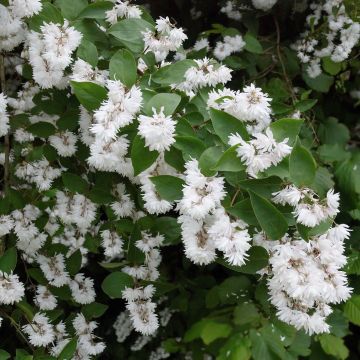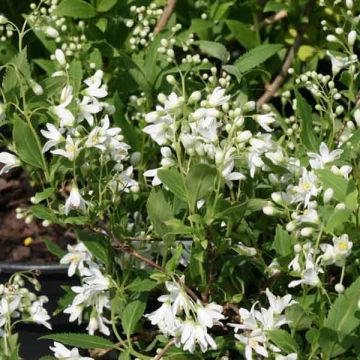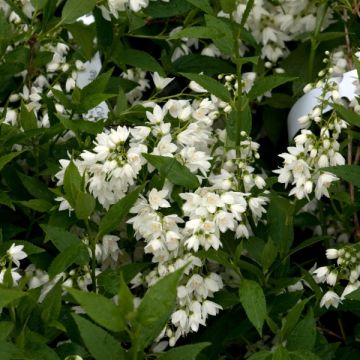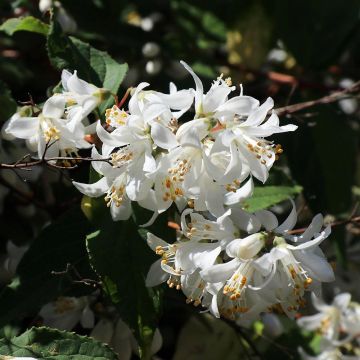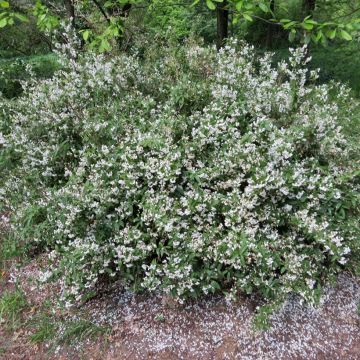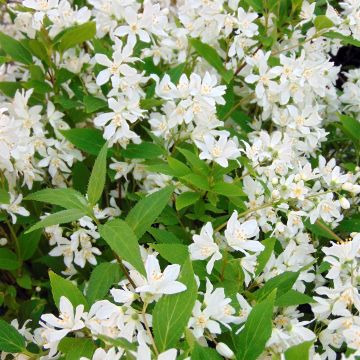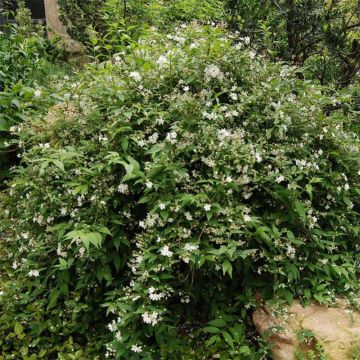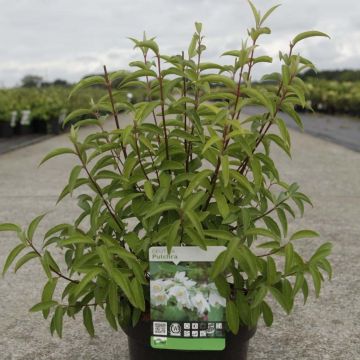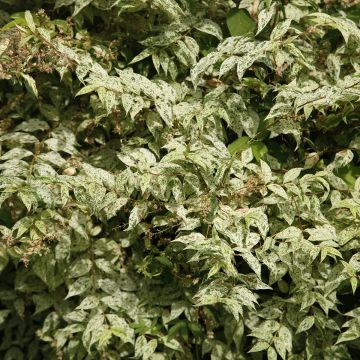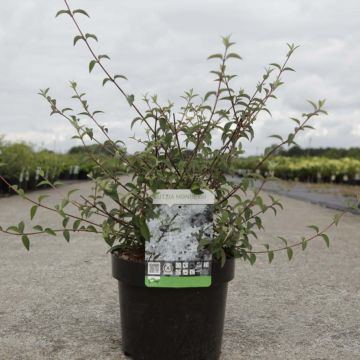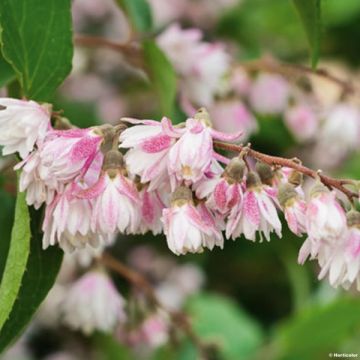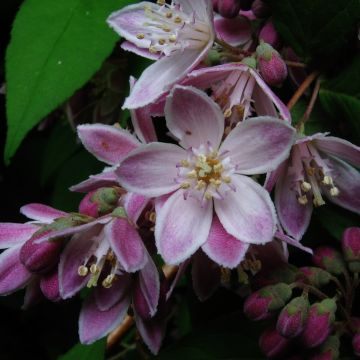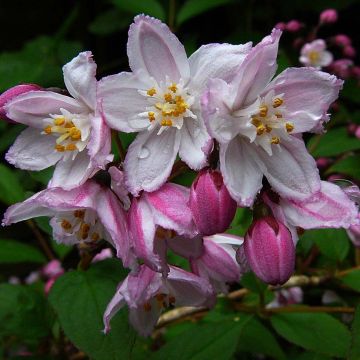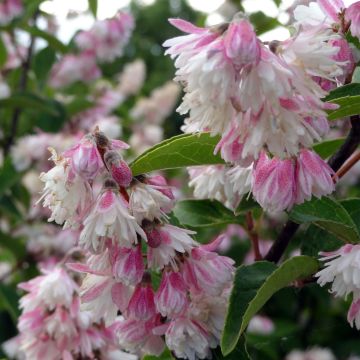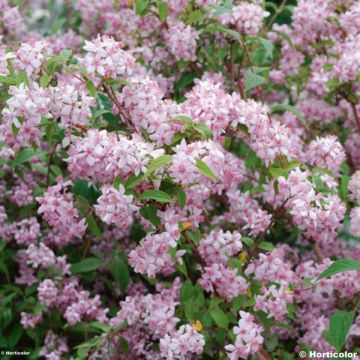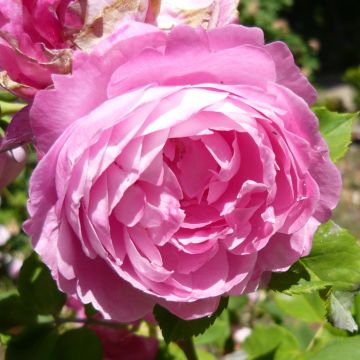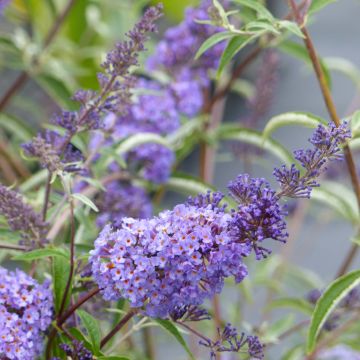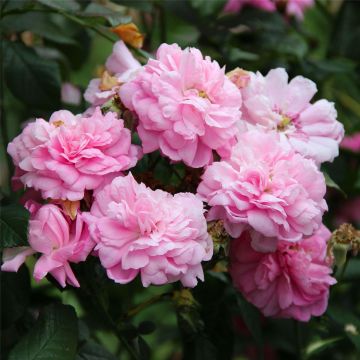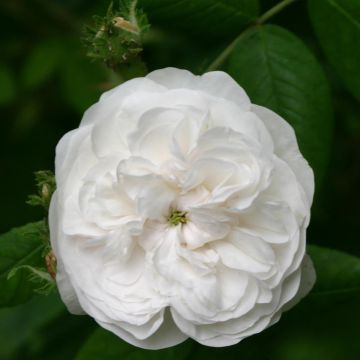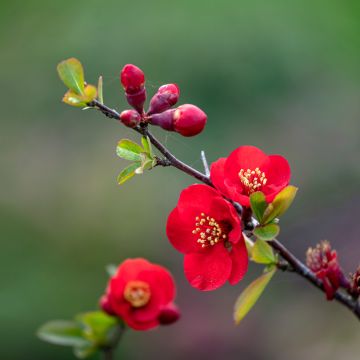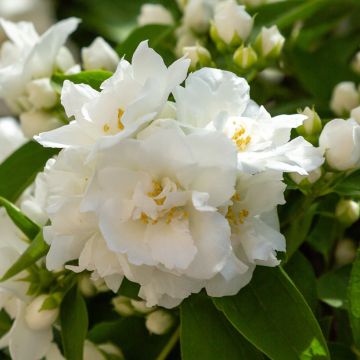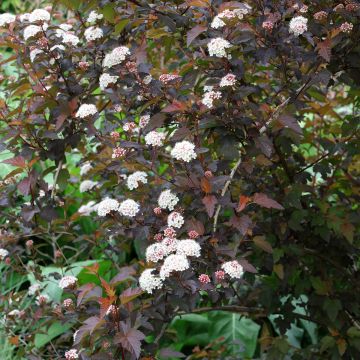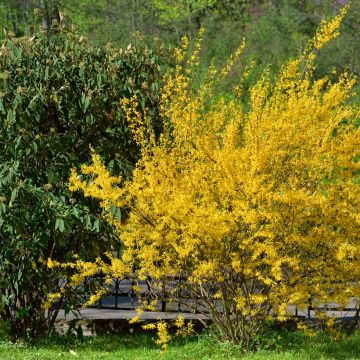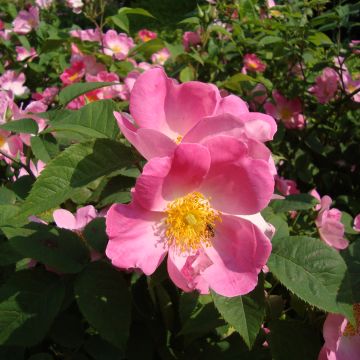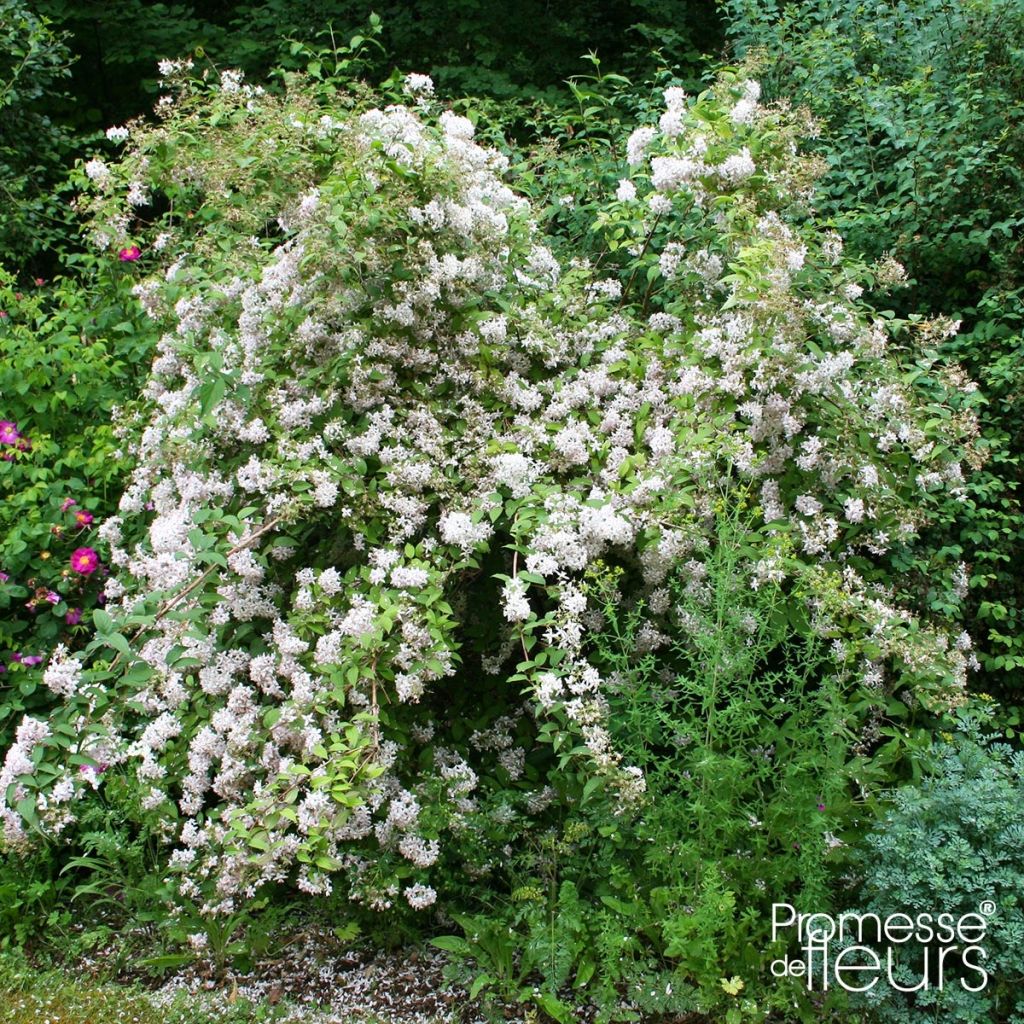

Deutzia scabra
Deutzia scabra
Deutzia scabra
Japanese Snow Flower, Fuzzy Deutzia, Rough Deutzia
Ordered as a bush, received a thin stem that made me doubt its ability to grow. However, it has endured successive frosts alternating with numerous winter rains. Waiting for it to establish itself and for the beautiful white flowering when the bush has grown fuller.
Nathalie F., 06/05/2023
Why not try an alternative variety in stock?
View all →This plant carries a 24 months recovery warranty
More information
We guarantee the quality of our plants for a full growing cycle, and will replace at our expense any plant that fails to recover under normal climatic and planting conditions.
From €5.90 for pickup delivery and €6.90 for home delivery
Express home delivery from €8.90.
Does this plant fit my garden?
Set up your Plantfit profile →
Description
The Deutzia scabra or Rough Deutzia is a large bush, appreciated for its fast growth, ease of cultivation, and superb spring flowering. It is the hardiest species of Deutzia. From June to July, its upright then gracefully arching branches bear cascades of 15 cm (5.9 in) long panicles, with pure white fringed pompom-like flowers with pinkish reflections, slightly scented with honey! Its significant growth and graceful architecture make it an exceptional specimen as a standalone plant or in a flowering hedge in a medium to large garden. It is a deciduous bush that thrives in both full sun and partial shade and tolerates even chalky soils, as long as they are deep, rich, and well-drained.
The Deutzia scabra is native to China and Japan, but also found in Pakistan. This large bush has an upright habit in its early years, which becomes more spreading with age. Its flexible branches are slightly arched at their tips. Its bark, cinnamon-coloured, peels off when mature. With fast growth, it reaches an average height of 3m (9 ft 10 in) and a spread of 2m. In June and July, the Deutzia scabra offers slightly honey-scented flowering, with cascading and double white star-shaped flowers in panicles. When they first open, the petals' undersides can be striped with pink, giving the flower an overall pink hue. As they fully open, the pure white interior of the petals becomes visible, giving the flowers their white appearance. Its deciduous leaves are a fairly dark matte green, downy, and rough. It is this roughness that earned the species its name "scabra," which means rough in Latin. The leaves, elongated oval to lanceolate in shape, measure 4 to 7 cm (1.6 - 2.8 in) in length and have serrated margins.
The Deutzia scabra may be the hardiest of all Deutzias, but it dislikes drought and shallow soils. To ensure its beautiful flowers thrive, protecting this bush from the burning sun and strong winds is essential. This stunning plant can stand alone in a small garden or be part of a mixed hedge with other flowering bushes that bloom at different times, such as shrub roses, butterfly bushes, lilacs, mock oranges, spireas, flowering crabapple trees, or hawthorns. It also pairs well with evergreen foliage plants like conifers, Elaeagnus ebbingei, Photinia, and Mexican orange trees.
Report an error about the product description
Deutzia scabra in pictures
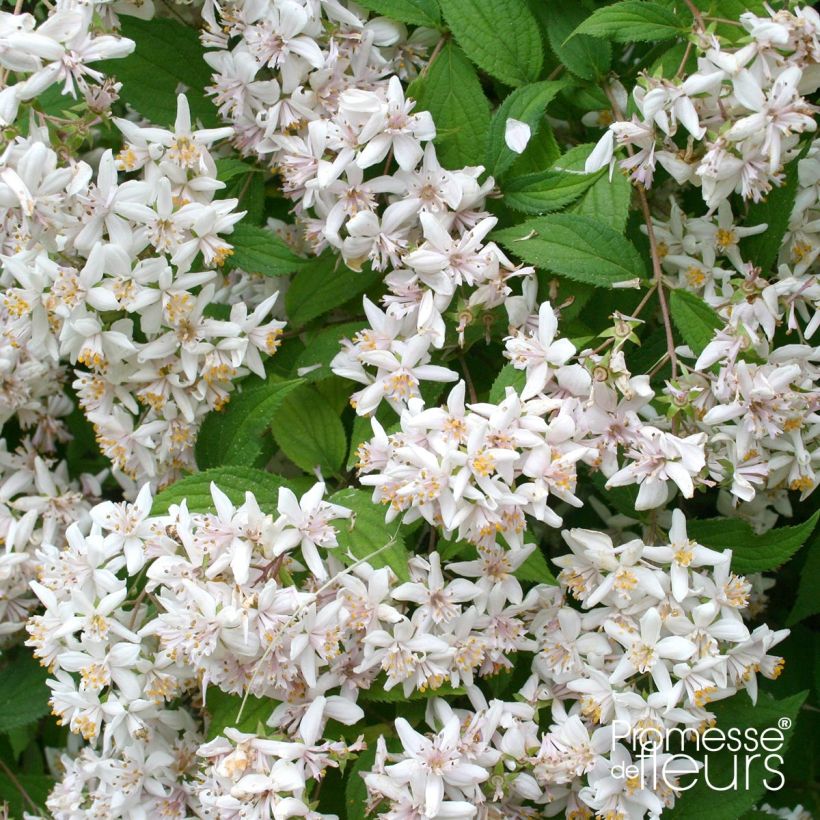

Plant habit
Flowering
Foliage
Botanical data
Deutzia
scabra
Hydrangeaceae
Japanese Snow Flower, Fuzzy Deutzia, Rough Deutzia
Cultivar or hybrid
Other Deutzia
Planting and care
Deutzia scabra prefers deep, moist, well-drained and humus-rich soils. It grows best in full sun or partial shade but should be sheltered from strong winds to protect its flowers. If the soil is accommodating and tolerates the presence of limestone, the plant will thrive. Pruning the plant after flowering is recommended to remove all dead stems and floral branches and keep it neat.
Planting period
Intended location
Care
-
, onOrder confirmed
Reply from on Promesse de fleurs
Foolproof Shrubs
Haven't found what you were looking for?
Hardiness is the lowest winter temperature a plant can endure without suffering serious damage or even dying. However, hardiness is affected by location (a sheltered area, such as a patio), protection (winter cover) and soil type (hardiness is improved by well-drained soil).

Photo Sharing Terms & Conditions
In order to encourage gardeners to interact and share their experiences, Promesse de fleurs offers various media enabling content to be uploaded onto its Site - in particular via the ‘Photo sharing’ module.
The User agrees to refrain from:
- Posting any content that is illegal, prejudicial, insulting, racist, inciteful to hatred, revisionist, contrary to public decency, that infringes on privacy or on the privacy rights of third parties, in particular the publicity rights of persons and goods, intellectual property rights, or the right to privacy.
- Submitting content on behalf of a third party;
- Impersonate the identity of a third party and/or publish any personal information about a third party;
In general, the User undertakes to refrain from any unethical behaviour.
All Content (in particular text, comments, files, images, photos, videos, creative works, etc.), which may be subject to property or intellectual property rights, image or other private rights, shall remain the property of the User, subject to the limited rights granted by the terms of the licence granted by Promesse de fleurs as stated below. Users are at liberty to publish or not to publish such Content on the Site, notably via the ‘Photo Sharing’ facility, and accept that this Content shall be made public and freely accessible, notably on the Internet.
Users further acknowledge, undertake to have ,and guarantee that they hold all necessary rights and permissions to publish such material on the Site, in particular with regard to the legislation in force pertaining to any privacy, property, intellectual property, image, or contractual rights, or rights of any other nature. By publishing such Content on the Site, Users acknowledge accepting full liability as publishers of the Content within the meaning of the law, and grant Promesse de fleurs, free of charge, an inclusive, worldwide licence for the said Content for the entire duration of its publication, including all reproduction, representation, up/downloading, displaying, performing, transmission, and storage rights.
Users also grant permission for their name to be linked to the Content and accept that this link may not always be made available.
By engaging in posting material, Users consent to their Content becoming automatically accessible on the Internet, in particular on other sites and/or blogs and/or web pages of the Promesse de fleurs site, including in particular social pages and the Promesse de fleurs catalogue.
Users may secure the removal of entrusted content free of charge by issuing a simple request via our contact form.
The flowering period indicated on our website applies to countries and regions located in USDA zone 8 (France, the United Kingdom, Ireland, the Netherlands, etc.)
It will vary according to where you live:
- In zones 9 to 10 (Italy, Spain, Greece, etc.), flowering will occur about 2 to 4 weeks earlier.
- In zones 6 to 7 (Germany, Poland, Slovenia, and lower mountainous regions), flowering will be delayed by 2 to 3 weeks.
- In zone 5 (Central Europe, Scandinavia), blooming will be delayed by 3 to 5 weeks.
In temperate climates, pruning of spring-flowering shrubs (forsythia, spireas, etc.) should be done just after flowering.
Pruning of summer-flowering shrubs (Indian Lilac, Perovskia, etc.) can be done in winter or spring.
In cold regions as well as with frost-sensitive plants, avoid pruning too early when severe frosts may still occur.
The planting period indicated on our website applies to countries and regions located in USDA zone 8 (France, United Kingdom, Ireland, Netherlands).
It will vary according to where you live:
- In Mediterranean zones (Marseille, Madrid, Milan, etc.), autumn and winter are the best planting periods.
- In continental zones (Strasbourg, Munich, Vienna, etc.), delay planting by 2 to 3 weeks in spring and bring it forward by 2 to 4 weeks in autumn.
- In mountainous regions (the Alps, Pyrenees, Carpathians, etc.), it is best to plant in late spring (May-June) or late summer (August-September).
The harvesting period indicated on our website applies to countries and regions in USDA zone 8 (France, England, Ireland, the Netherlands).
In colder areas (Scandinavia, Poland, Austria...) fruit and vegetable harvests are likely to be delayed by 3-4 weeks.
In warmer areas (Italy, Spain, Greece, etc.), harvesting will probably take place earlier, depending on weather conditions.
The sowing periods indicated on our website apply to countries and regions within USDA Zone 8 (France, UK, Ireland, Netherlands).
In colder areas (Scandinavia, Poland, Austria...), delay any outdoor sowing by 3-4 weeks, or sow under glass.
In warmer climes (Italy, Spain, Greece, etc.), bring outdoor sowing forward by a few weeks.

































